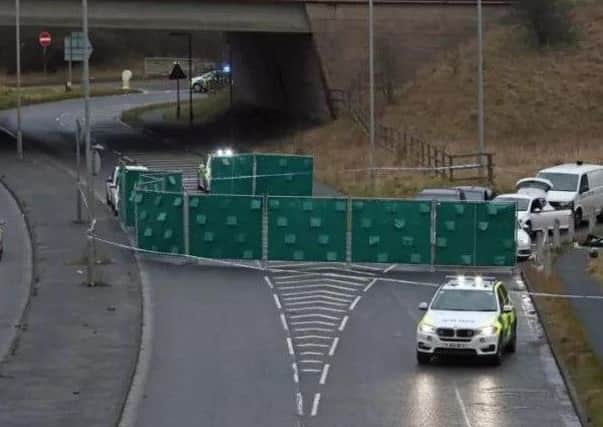M62 shooting: Police firearms officers to be fitted with body cameras


West Yorkshire Police says it is not currently possible for firearms officers to wear the chest-mounted cameras handed out to 2,000 of their colleagues as the position of their guns stop them recording footage.
The force is looking for a solution that can be mounted on either head or chest and are inviting companies to come in and demonstrate products that could do the job.
Advertisement
Hide AdAdvertisement
Hide AdSeparately, the force has revealed that the roll out of the body worn video (BWV) cameras from last year, in a move designed to improve transparency and increase conviction rates, has been hampered by a series of technical issues.
At one point, the introduction of the cameras had to be stopped because a battery issue was causing many of them to overheat, leading to a delay of several months.
The fact that body-worn cameras are not used by West Yorkshire Police’s firearms officers emerged in the aftermath of the fatal shooting of Yassar Yaqub on January 2.
Mr Yaqub, from Huddersfield, was shot when police stopped a car near junction 24 of the M62 in what West Yorkshire Police described as a “pre-planned operation”.
Advertisement
Hide AdAdvertisement
Hide AdThe Independent Police Complaints Commission is investigating but said on January 5 that no “relevant CCTV footage” had been found.
Mr Yaqub’s father said in a later interview that it was “not right” that police weren’t wearing the cameras, while campaign group JUST West Yorkshire has also called for more information.
A report by Chief Inspector Ian Williams, published on the website of police and crime commissioner Mark Burns-Williamson, said 2,000 cameras have been bought from Reveal Media for use by “all front line operation staff” other than special constables.
The roll-out of the technology started in May 2016 and will finish this April. So far 700 cameras have been deployed to officers in Bradford, Kirklees, Calderdale and the Protective Services Operations teams, as well as officers using Taser and off-road motorcyclists.
Advertisement
Hide AdAdvertisement
Hide AdOfficers in Leeds will start getting the cameras this month, with Wakefield still to come, and hostage negotiators will get cameras with extended memories.
According to the force, the cameras “have the potential to improve the efficiency and effectiveness of the criminal justice system, further improving integrity and the corroboration of evidence by acting as an ‘independent witness’”.
Chief Insp Williams said the devices have been “well received by officers and the public alike”, and were “proving to be an exceptional tool for gleaning intelligence”.
He wrote: “Firearms Officers do not currently use BWV as when worn, the current device is positioned in such a way that when used in conjunction with a firearm it would fail to record the relevant footage and would also hinder the Officer wearing it operationally.
Advertisement
Hide AdAdvertisement
Hide Ad“Following National Police Chief Council recommendations concerning BWV being used by Firearms Officers, a Yorkshire and Humberside regional project team was formed. The team are working towards a solution that can be both body and head mounted.
“The team have been consulting nationally with other Police Forces to help identify a suitable option. Later this year suitable companies will be invited to WYP to showcase and demonstrate their products.
“This will lead to a shortlisting and a trial to identify the best product to meet the relevant specific requirements of a Firearms Officer.”
The report outlined a number of what were described as ‘hurdles and barriers’ encountered by the force.
Advertisement
Hide AdAdvertisement
Hide AdInitially, there were “a number of software and hardware technical issues which led to a delay in the initial implementation”.
Chief Insp Williams wrote: “The critical issues concerned the retention or possible loss of data and it was crucial that the supplier rectified these issues prior to going live.”
He added: “Once the Body Worn Delivery Board was satisfied, rollout began in May 2016. During the rollout, a battery issue came to light which caused significant numbers of cameras to overheat.
“The rollout was immediately halted at the point where both Bradford and Calderdale were live. A fault was diagnosed in the manufacturing process of the battery.
Advertisement
Hide AdAdvertisement
Hide Ad“The risk to officers and staff was assessed and mitigation put in place to enable existing cameras to continue to be used. The supplier offered to upgrade all 2000 WYP cameras to a version with a greater battery capacity and crucially from a different supplier. This was at no additional cost to WYP.
“However, the supplier was unable to adhere to the original timeline and there was a further three month delay in the rollout as a result.”